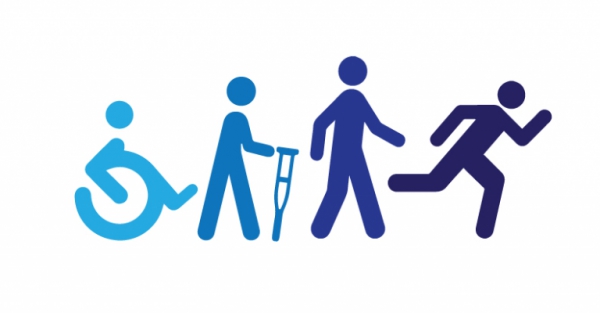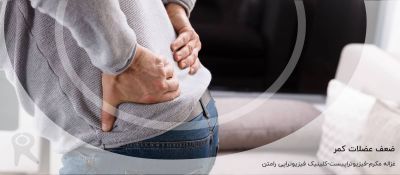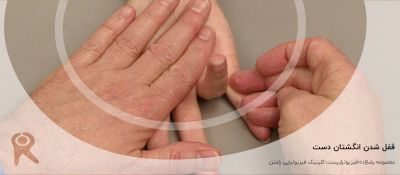Definition
Spasticity is a consequence of neuromuscular disorders, which affects quality of life in those who experience this phenomenon. Spasticity results from an upper motor neuron lesion that disinhibits the tendon stretch reflex; spasticity results in a velocity dependent tightness of muscle.
The most well-known and referenced description of spasticity is the physiological definition proposed by Lance in 1980.
- 'Spasticity is a motor disorder characterised by a velocity-dependent increase in tonic stretch reflexes (muscle tone) with exaggerated tendon jerks, resulting from hyperexcitability of the stretch reflex, as one component of the upper motor neurone syndrome
More recently, a definition from Pandyan et al (2005) states that spasticity is: - 'Disordered sensorimotor control, resulting, resulting from an upper motor neuron lesion (UMN), presenting as an intermittent or sustained involuntary activations of muscles
Epidemiology
Many clinical scenarios can lead to spasticity, such as stroke, cerebral palsy (CP), anoxia, traumatic brain injury (TBI), spinal cord injury (SCI), multiple sclerosis (MS), and other central nervous system (CNS) neurodegenerative diseases eg MND
Spasticity affects approximately
- 35% of those with stroke,
- more than 90% with CP
- about 50% of TBI patients
- 40% of SCI patients
- between 37% and 78% of MS patients.
Anatomy and Etiology
Spasticity is considered to be a positive sign of the upper motor neuron syndrome (UMNS), which refers to motor behaviors resulting from lesions proximal to the alpha motor neuron, therefore within the spinal cord or brain. Other positive features of UMNS include exaggerated muscle stretch reflexes and up-going plantar reflex. Negative features include motor weakness, slowed movement, loss of dexterity, or selective motor control. A UMN injury leads to loss of inhibition downstream and hypersensitivity of the reflex arc within the spinal cord.
Primary impairments from an upper motor neuron lesion (UMNL) are usually due to the disruption of supraspinal control of descending pathways that control excitatory and inhibitory influences on proprioceptive, cutaneous and nociceptive spinal reflexes.
The Inhibitory System
Corticorecticular Fibres form the Corticoreticular Spinal Tract. These tracts travel with, but are separate from, the Corticospinal Tract, and is responsible for the facilitation of the inhibitory area within the medulla called the ventromedial reticular formation. Here, the Dorsal Reticulospinal Tract originates, which is responsible for an inhibitory action on both the stretch and flexor reflexes.
The Excitatory System
The bulbopontine tegmentum gives rise to the Medial Reticulospinal Tract and, acting weakly with the Vestibulospinal Tract, is excitatory to both stretch and extensor reflexes and like the Dorsal Reticulospinal Tract, is also inhibitory to the flexor reflexes.
Different Lesions and Their Presentations
The signs and symptoms between Cortical UMN Lesions and Spinal Cord UMN Lesions vary due to the location of where the disruption has taken place.
Normal
Both the inhibitory system (Corticospinal Tract and Dorsoreticulospinal Tract) and excitatory systems (Medial Reticulospinal and Vestibulospinal Tract) are in dynamic balance and therefore the inhibition to the spinal cord is easily adjusted according to demand.
Corticospinal Tract Lesion
Although the Corticospinal Tract has an inhibitory influence on stretch and flexor reflex, the main inhibitory system produced by the Dorsal Reticulospinal Tract remains intact and therefore the balance of excitatory and inhibitory influences are maintained.
Internal Capsule Lesion
Leads to interruption of both the Corticospinal Tract and Corticoreticular Tract pathways that are responsible for the inhibitory response and some loss of inhibition to stretch and flexor stretches. The excitatory systems from both the Medial Reticulospinal and Vestibulospinal Tract are more dominant which leads to the facilitation of extensor and stretch reflexes but inhibition of flexors.
Incomplete Spinal Cord Lesion
Signs and symptoms will vary dependant on site and extent. If the inhibitory system is affected then there will be an unopposed excitatory drive to stretch and extensor reflexes with partial inhibition of flexor reflexes.
Complete Spinal Cord Lesion
Spinal reflexes are unopposed due to the complete loss of supraspinal control. Both flexor and extensor reflexes are disinhibited and therefore people may experience both flexor and extensor spasms.
Clinical Presentation
On physical exam, hallmark findings include
- high muscle tone in muscle groups such as the shoulder adductors; elbow, wrist, and finger flexors; and forearm pronators. In the lower extremities, the increased tone is especially prominent in the hip adductors, knee flexors and extensors, and plantar flexors and invertors of the ankle.
- Patients may report difficulty with footwear if their spasticity involves constant, high tone of the extensor hallucis longus or long toe flexors.
- Spasticity varies with speed of movement; meaning the faster the muscle is moved or stretched, the greater the resistance to stretch or passive elongation is felt.
- Clonus, spastic co-contractions, and spastic dystonia may be evident. ie Clonus is defined as an alternating muscle contraction and relaxation of the agonist and antagonist muscles. Spastic co-contractions are abnormal antagonist contractions that present during voluntary agonist effort. Spastic dystonia is a muscle contraction that is present at rest, leading to a constant clinical posture that is highly sensitive to stretch.
Characteristics
Spasticity has a number of characteristics that differentiates it from rigidity:
- Velocity dependence
- Clasp Knife Phenomenon: Limb initially resists movement and then suddenly gives way
- Distribution: Antigravity muscles being more affected
- Stroking Effect: Stroking the surface of the antagonist muscle may reduce tone in spasticity.
Physiotherapy
Spasticity is one of the components of the UMN syndrome but should not be considered in isolation when it comes to management strategies. It is essential that management targets function and is always patient focused rather than aimed at reducing the degree of spasticity
Neurorehabilitation comprises four main categories of spasticity management targets.
- Client care: Preventing or treating contractures; preventing or treating pressure areas; proper positioning of the body on the bed/wheelchair; easy orthotics fitting.
- Movement improvement:The unmasking of voluntary movements previously covered by significant spasticity in cases of incomplete lesions; accelerating the “spontaneous” recovery process; modifying the “immature” motor pattern; using new recovery techniques to promote guided neuroplasticity, e.g. robotic rehabilitation; new functional pattern in moving and walking.
- ADL's: transfers, getting around, putting on clothes, personal hygiene, driving, etc.
- Quality of life: Independent living; social and professional reintegration










